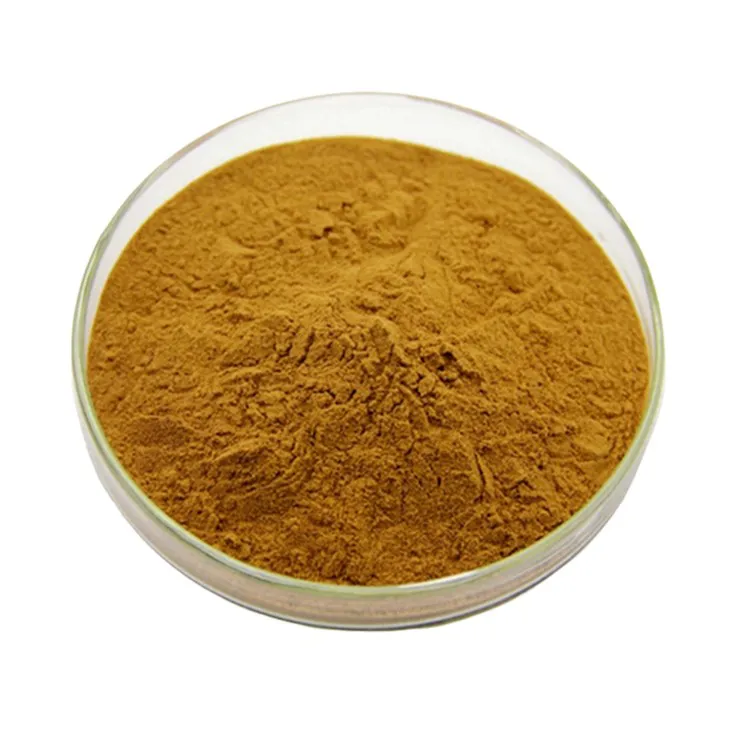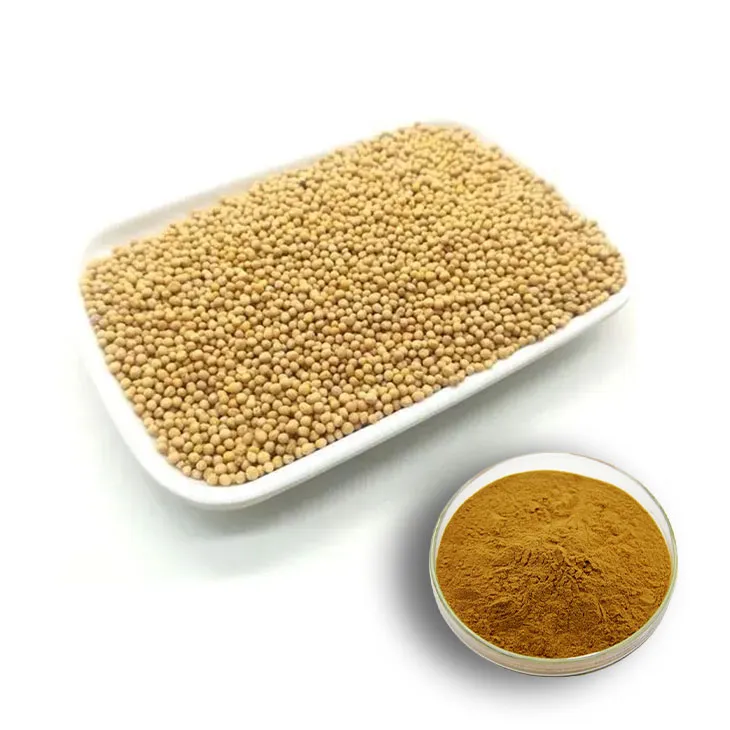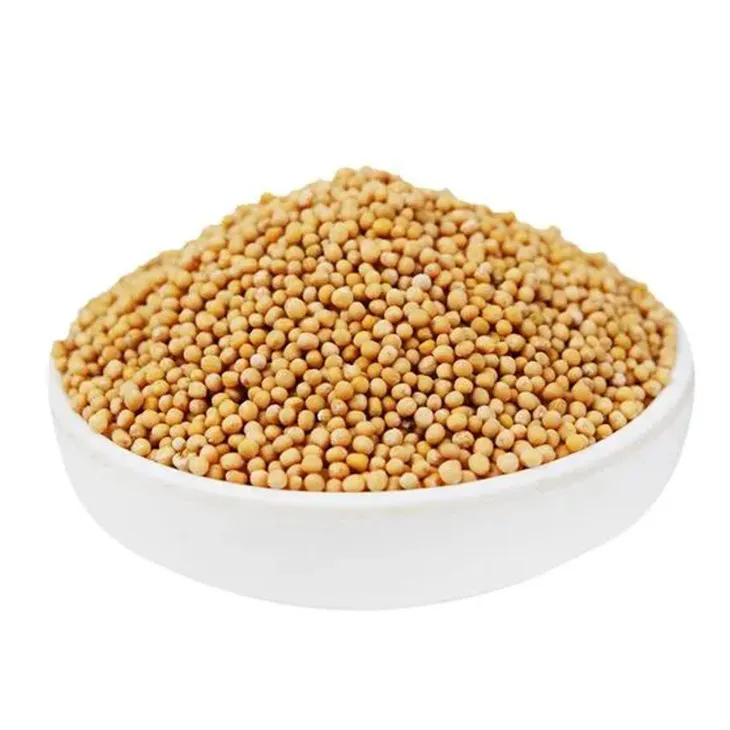- 0086-571-85302990
- sales@greenskybio.com
The best source of natural white mustard seed extract.
2024-11-29

Introduction
White mustard seed extract has been garnering significant attention in recent years due to its potential benefits in various fields. It is known for its unique chemical composition, which may offer properties such as anti - inflammatory, antioxidant, and antimicrobial effects. However, the quality, purity, and effectiveness of the extract can vary greatly depending on its source. This article aims to explore the prime sources of White mustard seed extract, taking into account crucial factors like quality, purity, and sustainability.

What is White mustard seed extract?
White mustard seeds, scientifically known as Sinapis alba, are small, spherical seeds that are rich in various bioactive compounds. The extract is obtained through a process that typically involves grinding the seeds and then using solvents such as ethanol or water to isolate the desired components. These components may include glucosinolates, which are sulfur - containing compounds that are believed to be responsible for many of the health - promoting properties associated with white mustard seed extract.

Factors Affecting the Quality of White Mustard Seed Extract
1. Quality of the Seeds
The starting point for a high - quality extract is high - quality seeds. Seeds that are free from contaminants, such as pesticides, heavy metals, and fungal infections, are essential. Organically grown white mustard seeds are often preferred as they are less likely to be exposed to harmful chemicals. The genetic variety of the seeds also plays a role. Some varieties may have a higher content of the desired bioactive compounds, making them more suitable for extraction.
2. Extraction Methods
- The method used for extraction can significantly impact the final product. Traditional extraction methods, such as cold - pressing, are often considered more natural and may preserve the integrity of the bioactive compounds better. However, modern extraction techniques, like supercritical fluid extraction, can also be highly effective in isolating specific components with high purity.
- During extraction, factors such as temperature, pressure, and the type of solvent used need to be carefully controlled. For example, excessive heat during extraction can cause the degradation of some of the sensitive bioactive compounds in the white mustard seeds.
3. Post - Extraction Processing
After extraction, the resulting product may undergo further processing steps. These can include filtration to remove impurities, concentration to increase the potency of the extract, and drying to improve its stability. The quality of these post - extraction processes can also affect the overall quality of the white mustard seed extract.

Regions Known for High - Quality White Mustard Production
1. Europe
- Several European countries have a long - standing tradition of white mustard cultivation. France, for example, is known for its high - quality white mustard production. The temperate climate and fertile soil in certain regions of France provide ideal conditions for growing white mustard. The French are also known for their meticulous agricultural practices, which ensure the production of high - quality seeds.
- In the United Kingdom, white mustard has been cultivated for centuries. The cool and damp climate in parts of the UK is suitable for the growth of white mustard. Here, traditional farming methods are often employed, which can contribute to the production of seeds with unique flavor profiles and high bioactive compound content.
2. North America
- The United States, particularly in states like Montana and North Dakota, has significant white mustard production. The large - scale agricultural operations in these regions can produce a substantial amount of white mustard seeds. The relatively dry climate and vast arable land provide the necessary conditions for cultivation. The use of modern agricultural technologies in the US also helps in ensuring a consistent supply of high - quality seeds.
- Canada is another important producer of white mustard in North America. The prairie provinces, such as Saskatchewan and Manitoba, have suitable climates for white mustard growth. Canadian white mustard seeds are often sought after for their purity and high - quality standards.
3. Asia
- In India, white mustard is one of the traditional crops. Different regions in India, with their diverse climates and soil types, contribute to a wide range of white mustard varieties. The seeds produced in India are often used in traditional medicine and cuisine, indicating their rich bioactive compound content. However, ensuring the quality and purity of the seeds in the context of large - scale commercial extraction can be a challenge due to the prevalence of small - scale farming in some areas.
- China also has a significant white mustard cultivation area. The northern regions of China, with their temperate climates, are suitable for white mustard growth. Chinese white mustard seeds may have unique characteristics due to the local growing conditions and traditional farming techniques.

Sustainability Considerations in White Mustard Seed Production
- Sustainable farming practices are crucial when considering the best source of white mustard seed extract. Organic farming, which reduces the use of synthetic pesticides and fertilizers, not only protects the environment but also can result in seeds with a more natural chemical composition. For example, in Europe, many farmers are turning to organic white mustard cultivation to meet the increasing demand for natural and sustainable products.
- Water management is another important aspect of sustainability. In regions where water is scarce, such as parts of North America, efficient irrigation methods are being developed to ensure that white mustard cultivation does not put excessive strain on water resources.
- Furthermore, biodiversity conservation on white mustard farms can also enhance the overall sustainability. This can include maintaining hedgerows, which provide habitats for beneficial insects and birds, and rotating crops to prevent soil depletion.
Comparing Different Sources of White Mustard Seed Extract
- When comparing extracts from different regions, it is important to consider not only the quality of the seeds but also the extraction and processing methods used. For example, European extracts may be more likely to be produced using traditional methods that preserve the flavor and aroma of the white mustard seeds, while North American extracts may benefit from more advanced extraction technologies that can result in higher purity.
- Asian extracts, especially those from India and China, may offer unique bioactive compound profiles due to the different varieties of white mustard grown in these regions. However, ensuring consistent quality may be more challenging compared to regions with more standardized agricultural practices.
- In terms of sustainability, European and North American sources may have an edge in terms of meeting strict environmental and ethical standards. However, with the increasing focus on sustainable development in Asia, there are also many initiatives in India and China to improve the sustainability of white mustard seed production.
Conclusion
The search for the best source of natural white mustard seed extract is a complex one that involves considering multiple factors. The quality of the seeds, the extraction and post - extraction methods, and the sustainability of production all play important roles. While different regions around the world offer their own advantages in terms of white mustard seed production, it is essential to look for sources that can provide high - quality, pure, and sustainable white mustard seed extract. Whether it is the traditional white mustard - growing regions in Europe, the large - scale production in North America, or the diverse varieties in Asia, each has the potential to contribute to the production of excellent white mustard seed extract, depending on the specific requirements of the end - user.
FAQ:
What are the potential benefits of white mustard seed extract?
White mustard seed extract may have several potential benefits. It could have antioxidant properties, which help in fighting against free radicals in the body. It might also possess anti - inflammatory effects, potentially being useful for reducing inflammation. Additionally, it could play a role in digestive health, perhaps aiding in digestion or relieving certain digestive discomforts.
How can one determine the quality of white mustard seed extract?
The quality of white mustard seed extract can be determined by several factors. Firstly, the source of the mustard seeds is crucial. Seeds from regions known for high - quality white mustard production are more likely to yield a high - quality extract. Secondly, the extraction method matters. A proper extraction method should preserve the active compounds in the seeds without introducing contaminants. Thirdly, the purity of the extract can be measured through laboratory analysis to ensure that it contains a high concentration of the desired compounds and is free from impurities such as heavy metals or pesticides.
Which regions are known for high - quality white mustard production?
There are several regions known for high - quality white mustard production. Europe, particularly countries like France and Germany, has a long history of mustard cultivation and is known for producing high - quality white mustard. In addition, some parts of North America also produce good - quality white mustard. These regions typically have suitable climates and soil conditions for the growth of white mustard, which contribute to the quality of the seeds and, consequently, the extract.
What are the different extraction methods for white mustard seed extract?
Common extraction methods for white mustard seed extract include solvent extraction and mechanical extraction. Solvent extraction involves using a solvent, such as ethanol or hexane, to dissolve the active compounds from the mustard seeds. This method can be effective in obtaining a concentrated extract. Mechanical extraction, on the other hand, uses physical means like pressing to extract the oils and other compounds from the seeds. However, the choice of extraction method can impact the composition and quality of the final extract, and different methods may be more suitable depending on the desired end - product.
How does the extraction method impact the final product of white mustard seed extract?
The extraction method has a significant impact on the final product of white mustard seed extract. For example, if a harsh solvent is used in solvent extraction, it may not only extract the desired compounds but also unwanted substances, affecting the purity of the extract. On the other hand, mechanical extraction might not be as efficient in extracting all the active compounds, resulting in a less potent extract. The extraction temperature and time also play a role. Higher temperatures or longer extraction times may cause degradation of some of the active compounds, reducing the effectiveness of the extract.
Related literature
- White Mustard Seed Extract: Properties and Applications"
- "The Production and Quality of White Mustard in Different Geographical Areas"
- "Extraction Techniques for Obtaining High - Quality White Mustard Seed Extract"
- ▶ Hesperidin
- ▶ Citrus Bioflavonoids
- ▶ Plant Extract
- ▶ lycopene
- ▶ Diosmin
- ▶ Grape seed extract
- ▶ Sea buckthorn Juice Powder
- ▶ Fruit Juice Powder
- ▶ Hops Extract
- ▶ Artichoke Extract
- ▶ Mushroom extract
- ▶ Astaxanthin
- ▶ Green Tea Extract
- ▶ Curcumin
- ▶ Horse Chestnut Extract
- ▶ Other Product
- ▶ Boswellia Serrata Extract
- ▶ Resveratrol
- ▶ Marigold Extract
- ▶ Grape Leaf Extract
- ▶ New Product
- ▶ Aminolevulinic acid
- ▶ Cranberry Extract
- ▶ Red Yeast Rice
- ▶ Red Wine Extract
-
Curcuma Longa Extract/Turmeric extract
2024-11-29
-
Giant Knotweed Extract
2024-11-29
-
Tormentil Extract
2024-11-29
-
Gynostemma pentaphyllum extract
2024-11-29
-
Black Garlic Extract
2024-11-29
-
Centella Asiatica Extract
2024-11-29
-
Fenugreek Extract Powder
2024-11-29
-
Lemon Balm Extract
2024-11-29
-
Ginseng Root Extract
2024-11-29
-
Ginger Extract
2024-11-29





















